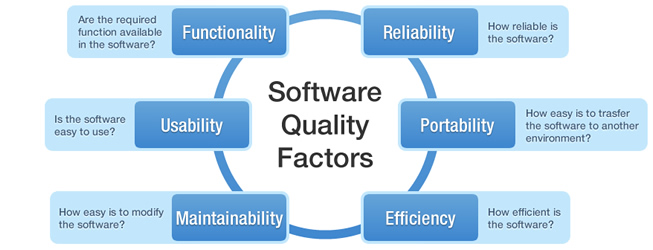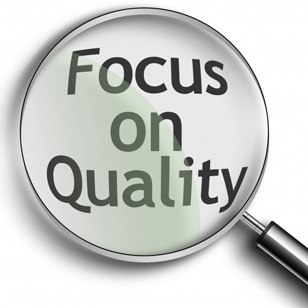Quality Control
Overview
To help you meet the challenge of high quality and reliable software solutions, Agile Software Solutions leverages industry proven practices when designing software quality control and testing methodology. These practices provide a step by step approach towards better processes in software assessment with minimum lead-time and cost. Working under the frameworks of standards and methodologies like Agile/Scrum, CMMI, and ISO, we established improvements and matured our processes to help organizations use a well structured, but agile approach towards building reliable software systems.
Service-oriented quality control framework allows you to customize our software assessment services to align with your specific requirements and integrate our development efforts into your operations.
Our software quality control is unrivaled due to our experience and best practices with the Agile/Scrum methodology.
Software Quality Factors
To achieve the highest quality of services, we focus on software quality control factors that you value the most such as Functionality, Reliability, Portability, Efficiency, Maintainability, and Usability.
Software quality cannot be inspected directly, but we can make quality visible by examining quality factors. Our software quality control methodology encompasses well-known industry testing types that are commonly used in quality factors evaluations.
To improve time to market of software products and make software quality more reliable, we extensively use a test automation approach during the product development stage, which is focused on automated defects detection and prevention. But equally important, we provide visibility to our customers quality tests and results as they occur.
To accomplish the quality in Functionality, Usability, Maintainability, Reliability, Portability and Efficiency, Agile Software solutions uses the following test methodology:
| Requirements Verification | Test Design | |
|
|
|
| Test Execution | ||
|
Software Quality Control Benefits
A complex activity such as software development can only be successful if the necessary methods and controls for the highest quality are in place from the start. The benefits of implementing a comprehensive software quality control process are significant including:
- Increased productivity for the development team where more time is spent on coding and less on testing.
- Improved product quality: test statistics and defect tracking are precise and up-to-date at any point in time due to a dedicated quality control team owner.
- Decreased re-work costs because defects are found earlier in the development lifecycle in the requirements analysis, test design, functional and non-functional requirements testing stages.
- Increased credibility that the software produced will be of the highest quality.





